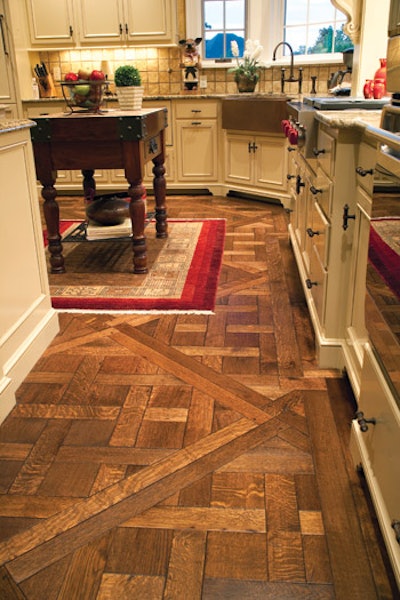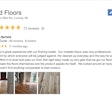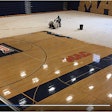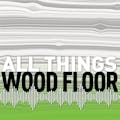


Not all commercial photographers are created equal. There are studio tabletop shooters, event shooters, annual report shooters, food photographers, aerial photographers, architectural photographers, industrial photographers and location shooters, to name a few.
All these photographers are grouped under "commercial photographers," but each has his or her specialty. Event shooters may not be the best choice to shoot food. Aerial photographers may not be the best for tabletop. And if you want photographs of the most beautiful wood floor installation you've ever done, you probably don't want an event shooter. Shooters who are studio photographers have different equipment from those who shoot on location. Large soft boxes are great for the studio but have little use on location unless you are shooting a business portrait (which is best left for a portrait photographer, anyway).
If you want to get beautiful photos of your wood floors, you'll need to hire an architectural photographer. But how do you choose one? Here are a few tips that should help guide you to invest wisely in your professional photography.
1) Room scenes should have natural-looking light.
Architectural photographers use existing light and "balanced" fill light to create a natural-looking interior. The interior should appear, once captured, as it looks with the naked eye. What you see should be what you get. The human eye has an iris, as does a camera, but as your eye concentrates on different areas of a scene, it has the capability to open and close instantaneously so a dark corner has detail and the shade on a lamp also does. A camera does not have that advantage-it has a much smaller dynamic range. The trick for the interior photographer is to create an image where there is detail in the shadows and highlights. A "blown out" window (way too bright) will attract the attention of the viewer to the window instead of the interior, as will a huge "hot spot" (glare) on the floor.
2) Photo composition should be balanced.
A well-balanced interior will have a correct exposure to allow the viewer to enjoy all the parts of the photo. Composition is key so the photographer can direct the viewer to the most important parts of each shot. Going back to No. 1, note that a strong composition cannot be effective without proper lighting balance. You can have a shot with beautiful composition but an over-blown window, which will distract the viewer.
3) See examples of what you want in the portfolio.
Be sure to examine any potential photographer's portfolio or website to make sure the type of photography you want is prominent. If they can't show you the types of shots you need in their portfolio, they won't produce your shot on location.
4) Clarify your usage rights.
One thing you'll want to clarify up front is usage rights. The phrase "usage rights" refers to the way photographers charge for an image. For example, portrait photographers charge a small sitting fee for taking the original shots and then charge an inflated fee when you buy prints. Commercial photographers get their money up front with their professional fee, and then they may also charge for usage rights depending how you plan to use their photography. Basically, if you use the shots for advertising and make millions of dollars, or if the image ends up on the cover of a design magazine, the photographer wants his cut.
My personal philosophy has always been to get paid a fair price for my shots up front and give my clients unlimited usage. Then when my client makes a lot of money with my photography, they will be more likely to buy more shots from me in the future. In fact, I encourage my clients to use my photography in as many different ways as possible. I don't resell their images-if I shoot a floor for an installer, I can't sell that photo to another installer! My advice is to clarify up front if your photographer charges usage rights, and if he does, make sure you only pay for the usage you need.


5) Know that costs have gone down.
Since the invention of digital cameras, a lot has changed for professional photographers; a huge change for me is the speed with which I can shoot on-site and still keep my quality high. Another big change is that I have greatly reduced my out-of-pocket cost per shot, which I have been able to pass on to my customers.
Reducing the time on site is great for you (my customer) and even better for your client, as there is less interruption to your residential or commercial customer. My time on-site is less than half of what it was back when I was behind my 4x5, shooting film. My post-production time has gone up, though, so I work the same amount of time on each shot, just not on-site. Turnaround times have also improved, since there is no running to the lab, waiting for processing and scheduling delivery. In most cases now I can deliver shots to the client within 24 hours.
6) Represent your work well.
I can certainly go to a hardware store, rent a sander, get some abrasives and sand my own floor. Will I get a professional result? No! But, especially with today's digital cameras, many people somehow think they are qualified to take their own photos. You can have the most beautiful wood floor in the world, but if the photography is average or worse, your floor will look average or worse. Remember, correct composition, lighting and color balance are what you pay a professional commercial photographer to deliver. Let the experts do what they do best-that is how the commerce of this country works. Also, pick your best jobs to advertise, but don't forget to have examples of your day-to-day bread and butter jobs, too.
Remember that investing in great architectural photography isn't a straight expense. If you invest well and use the images well, your photos should also be generating revenue for you and helping your business be a success.
Beware the Glare
Glare on the floor is a distraction. This can come from a window, lighting or a fireplace, like the example below. As you can see in the first photo, the glare on the floor distracts the viewer from enjoying the beautiful floor. In the second photo, the glare is taken out and this creates a much more "balanced" photo. Remember, your shots should feature your floor prominently, since it is the product you are trying to sell.






























